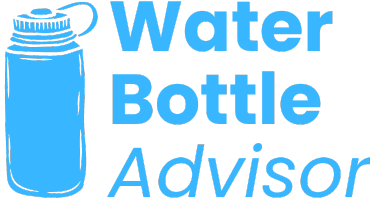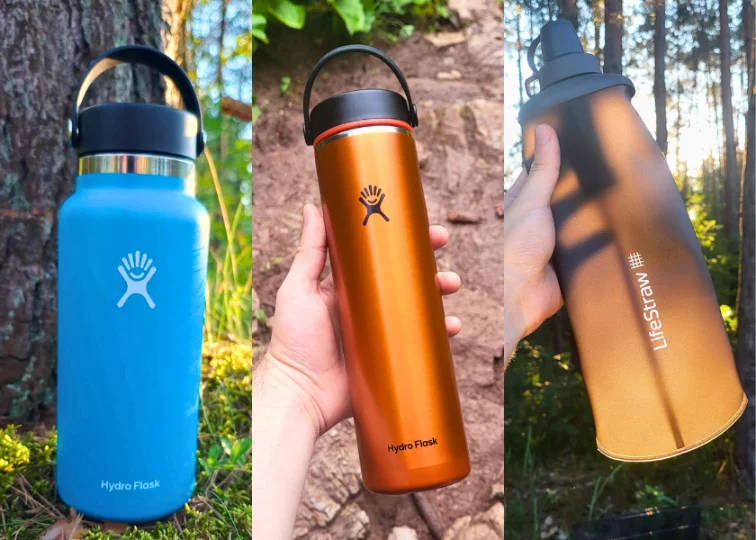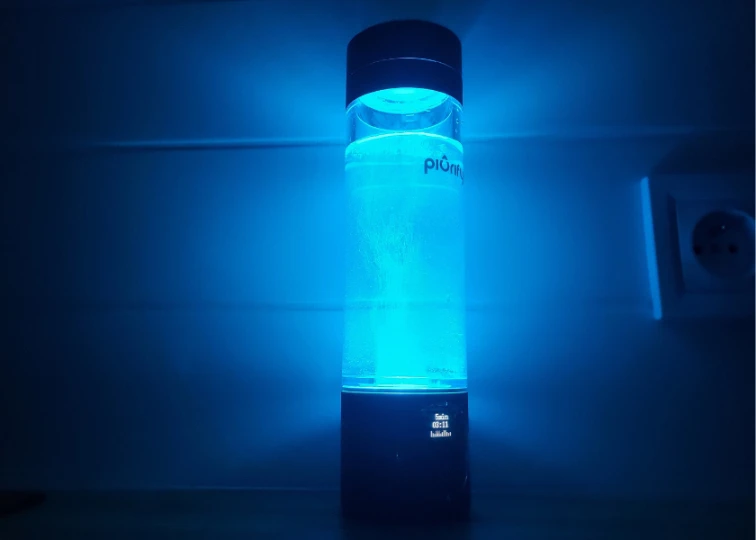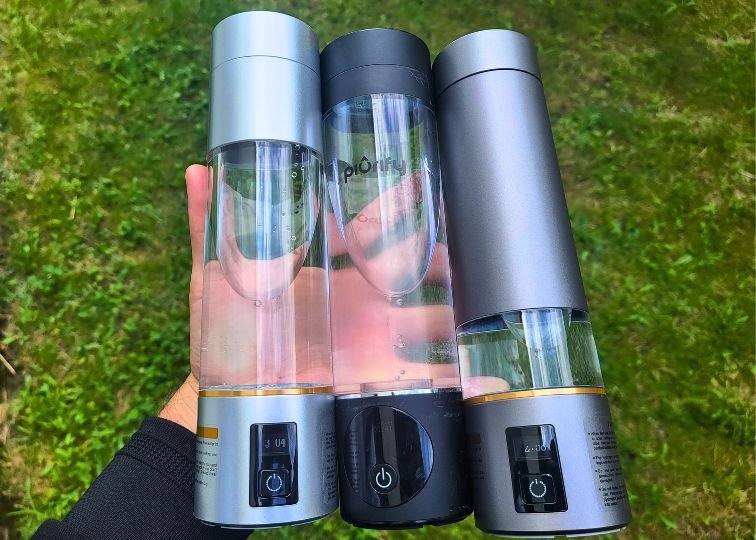You can have the best hiking boots and the most advanced GPS watch, but if your water bottle leaks or doesn’t keep your water cold, you’re in for a rough day.
You need something that can take a beating, stay leakproof, keep your drink cold, and, most importantly, hold a lot. Thinking a tiny bottle will do? Think again. On a long hike, it’ll feel like you’re trekking through a desert, questioning every life decision, especially that “adorable little bottle.”
In this guide, I’ve rounded up the absolute best water bottles for hiking. These aren’t just my favorites. They’re the top picks of hikers everywhere, and you’ll see them on trails all over the globe.
Some of the links on this page are affiliate links. This means that if you click on one of the links and make a purchase, I may earn a small commission at no additional cost to you.
What Are the Best Hiking Water Bottles?
Water Bottle | Final Score |
|---|---|
 Best Overall Hydro Flask | Final Score: 4.75/5 |
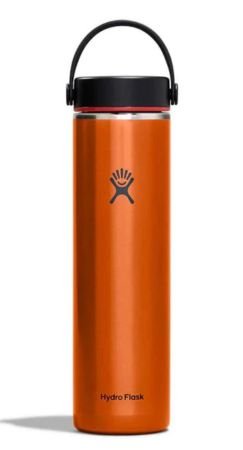 Best for Long Hikes Hydro Flask Trail Series | Final Score: 4.2/5 |
 Best with Filter LifeStraw Peak Squeeze | Final Score: 4.1/5 |
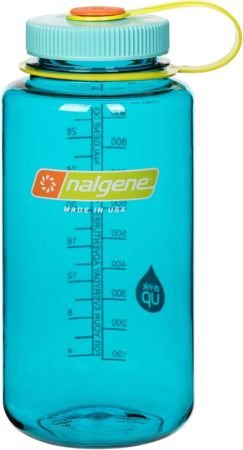 Best on Budget Nalgene Sustain | Final Score: 3.9/5 |
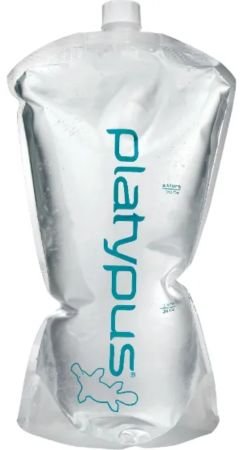 Best Capacity Platypus Platy | Final Score: 3.7/5 |
Hydro Flask Wide Mouth with Flex Straw Cap

KEY FEATURES
PROS
CONS
When you think “lightweight” and “water bottle,” Hydro Flask might not be the first thing that comes to mind. My 32 oz version weighs in at a hefty 15 ounces. However, it’s very versatile and can adapt to different scenarios on a trail.
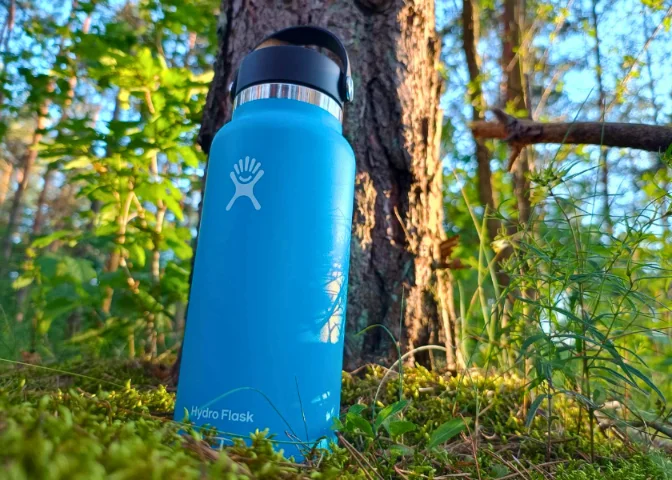
Key Features
One of the main reasons I reach for my Hydro Flask whenever I set out hiking is its reliable insulation performance. In my tests, my Hydro Flask managed to keep my water cold for a good 24 hours in a room-temperature environment.
On a hot day, this performance might dip a bit, but there’s a simple fix: just add ice. A quarter of the bottle filled with ice can stretch that cooling power well over a day.
My Hydro Flask also kept my tea hot for 12 hours, exactly as Hydro Flask promises.
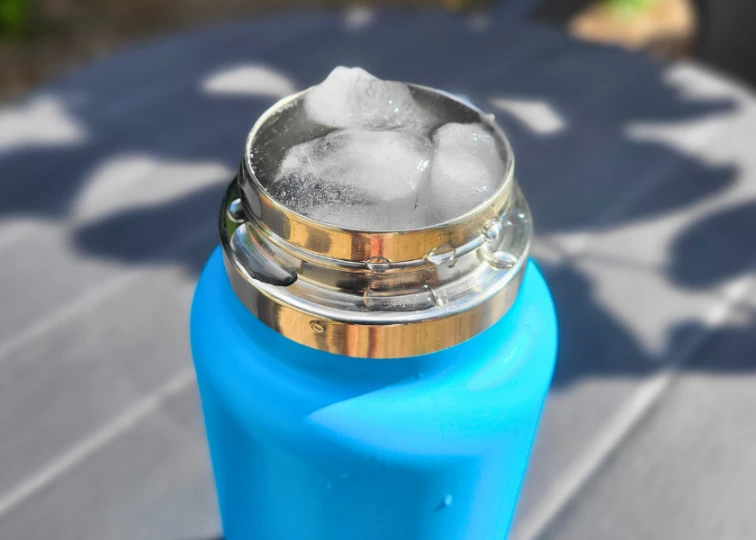
Durability is another feature that makes the Hydro Flask indispensable for hiking. It’s my second most durable stainless steel bottle, coming in right after the YETI Rambler. What I love about it is how forgiving this bottle is.
Sure, it can get a dent here and there, but the premium 18/8 stainless steel it’s made of holds up much better than any cheaper alternatives I’ve tried.
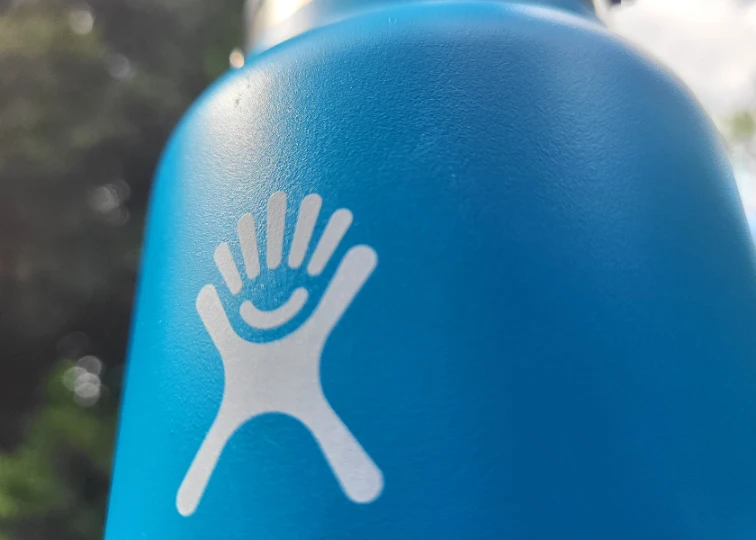
After a long hike, the last thing you want is a high-maintenance bottle. Thankfully, the Hydro Flask is extremely easy to clean.
The best part? You can just toss it into the dishwasher and call it a day. If you prefer manual washing, it takes only a few minutes to get it spotless.
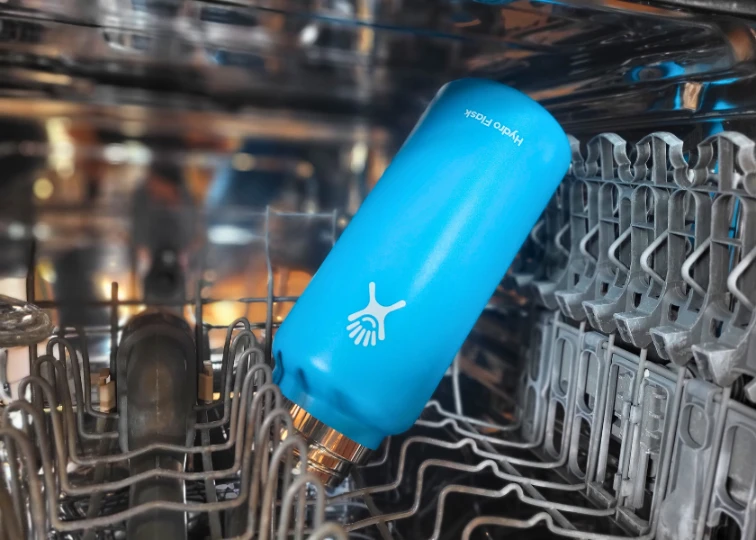
What about the cap? For the hiking enthusiasts, I’ve found that the Flex Straw Cap is the best choice. Normally, I’m a screw cap kind of person, but for hiking, a water bottle with a straw is unbeatable. It’s easy to flip open with one hand and super convenient to sip on the go.

Potential Pitfalls
Hydro Flask is one of the most expensive water bottles on the market. The value you get is tremendous, and the $45 I paid for my 32 oz. version paid off over two years of use. However, I still think it’s overpriced, and you need to be prepared to spend a premium to get premium quality.
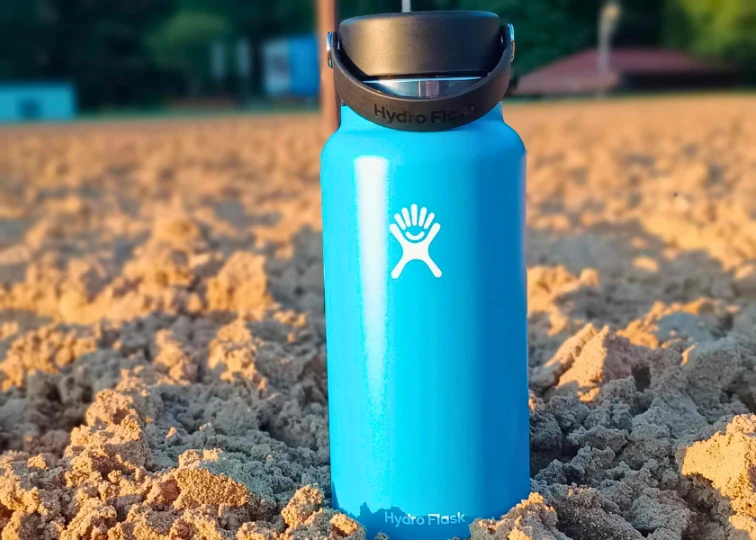
Verdict
Hydro Flask takes the top spot as the best water bottle for hiking. I absolutely love the reliability and versatility it offers. Thanks to its ability to keep beverages cold or hot, you can take it hiking in any season.
Also, after testing and comparing 40 and 32 oz. Hydro Flasks, I discovered that the latter is a much more portable option while still holding enough water even for more demanding hikes.
Hydro Flask |
|---|
 |
Best Overall |
Hydro Flask Trail Series

KEY FEATURES
PROS
CONS
The Trail Series is yet another Hydro Flask that I often use on my hikes. While I usually opt for the standard version, the Trail Series becomes my go-to whenever I need something a bit lighter for longer hikes that stretch beyond eight hours.
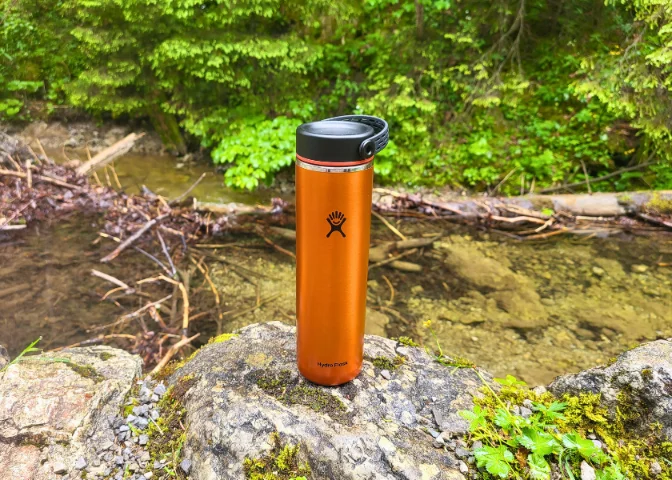
Key Features
The real selling point of the Trail Series is its weight. This bottle offers similar qualities to the standard Hydro Flask but with a crucial twist: it’s 25% lighter.
That might not sound like much on paper, but it makes a world of difference on overnight hikes. This portability isn’t just about the weight, though. It’s also about how easy it is to carry.
The strap is ridiculously comfortable, making it a breeze to tote around. Plus, it fits snugly in my car cup holder, which is a feature I sorely miss in other bottles. It’s definitely one of the most portable bottles I own, and it shines when you’re on the go.
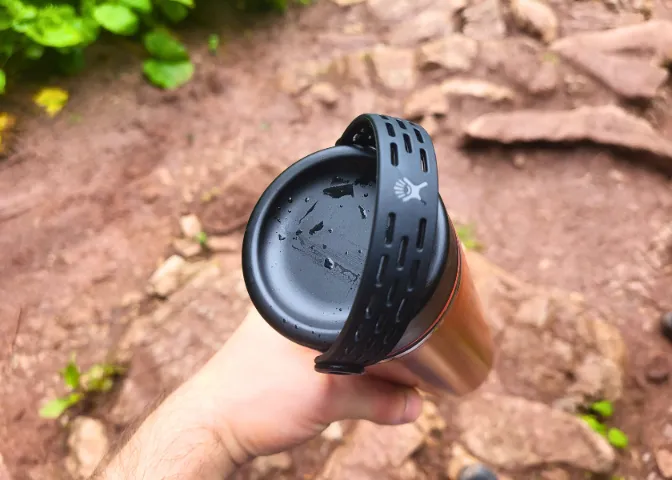
You can also expect your Trail Series to offer insulation that’s nearly identical to the standard Hydro Flask. Although I noticed it performs a bit worse by a few degrees, it can still keep your water cold for a solid 24 hours and your tea or coffee hot for up to 12 hours.
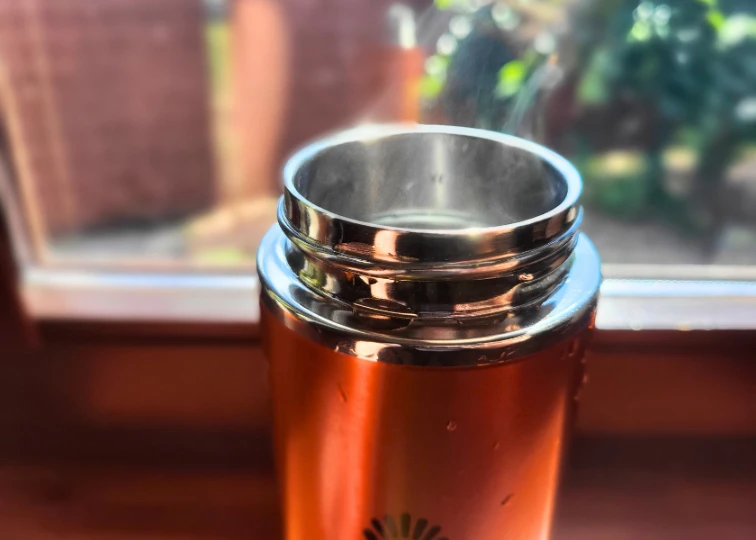
Potential Pitfalls
First things first, unlike the standard Hydro Flask, the Trail Series is not dishwasher safe. After your hike, you’ll need to spend a few minutes cleaning it manually.
It’s relatively easy to clean, though. But here’s a little caveat: if you’ve got the 32 or 40 oz version, you might find it a bit challenging to reach the bottom with a brush due to its towering height of 14 inches.
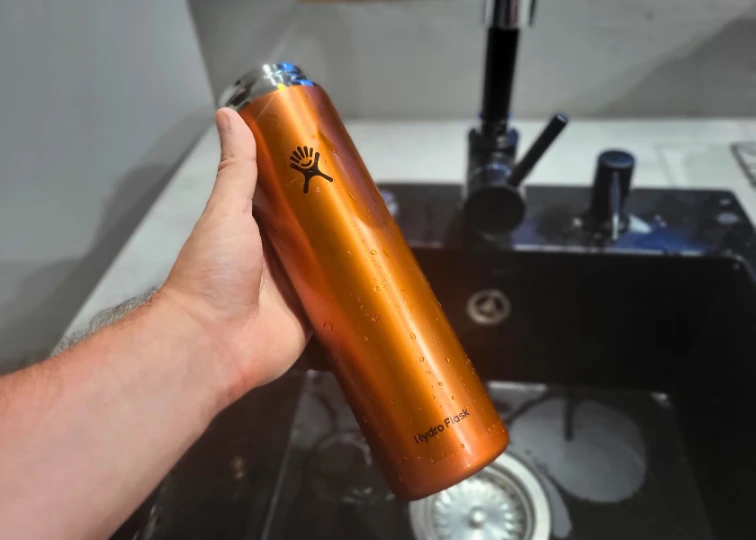
Another thing to keep in mind is that the Trail Series is prone to scratches. I’ve already got a few battle scars on mine from various adventures.
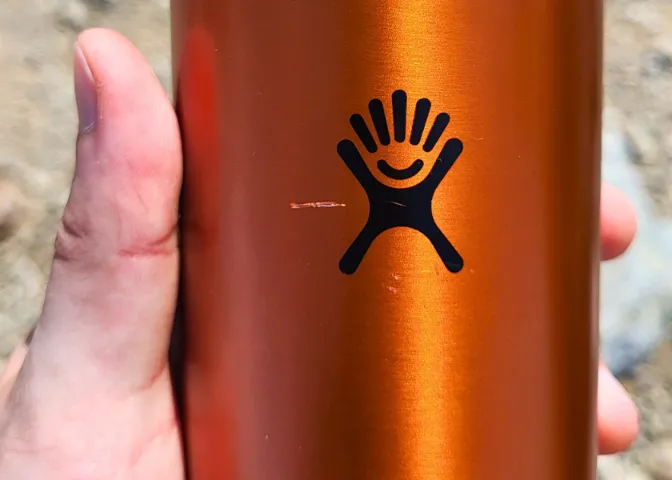
And then there’s the price. For the 24 oz. Trail Series, I shelled out $45. That’s a lot of money for something that holds water.
However, I forgot about the price pretty quickly after the first hike I took it on. The lightweight design and ease of carrying really make a difference, especially on longer treks.
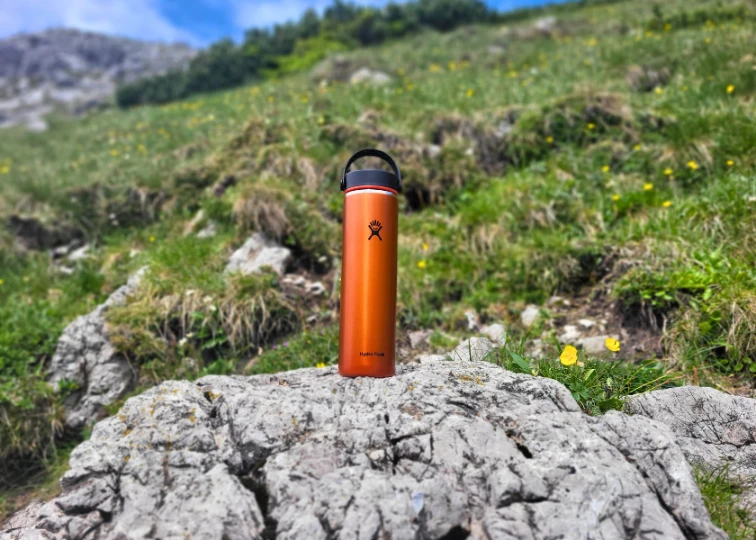
Verdict
The Trail Series is a unique Hydro Flask specifically designed for hiking, and it fulfills its role 100%. However, it’s not a one-trick pony. It’s one of the most versatile bottles, accompanying me to work, classes, and other settings. It’s very expensive, but it delivers on its promises, and I love it.
Hydro Flask Trail Series |
|---|
 |
Best for Long Hikes |
LifeStraw Peak Squeeze

KEY FEATURES (34 OZ)
PROS
CONS
The LifeStraw Peak Squeeze is my choice whenever I need a reliable bottle with a filter. It has saved me more than once, like that time I ambitiously decided to take a “shortcut” that doubled my hiking distance and left me parched.
If you find yourself deep in the backcountry, this bottle is extremely useful.
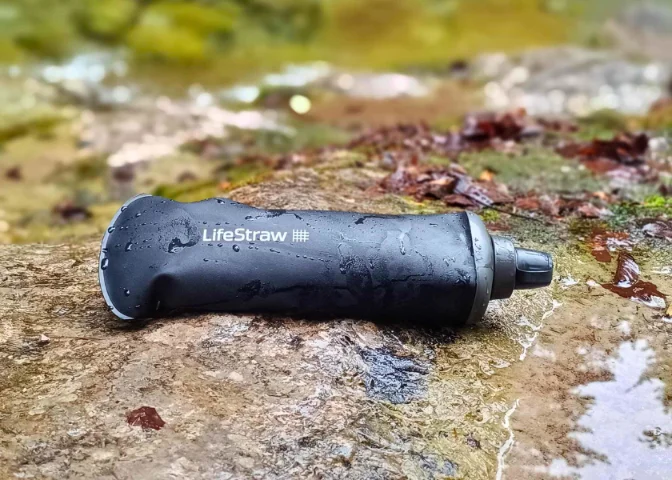
Key Features
The most important feature of the Peak Squeeze is undoubtedly its fantastic filter. It effectively removes bacteria, parasites, microplastics, and dirt, making even the murkiest pond water safe to drink.
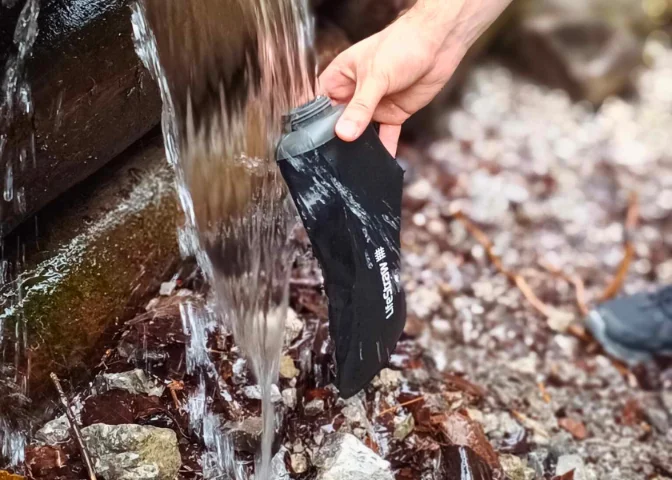
When I first got my hands on it, I was intrigued by its compact nature. The entire system measures about 10 inches long and 4 inches wide when full, but when empty, it compresses to the size of your fist.
You do need to make room for the filter, syringe, and cap, but you can squeeze the bottle into just about every nook and cranny in your pack.
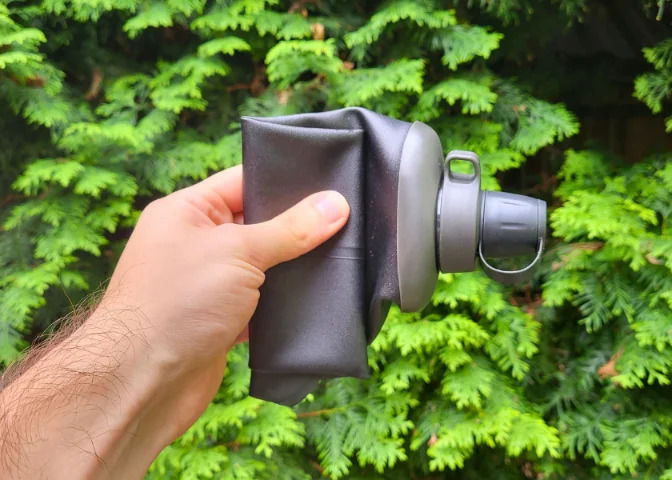
Even the taste is decent in this bottle, which is a rarity among bottles with filters. Initially, there’s a bit of an aftertaste, but it fades over time pretty quickly. Of course, the source matters, but drinking from the same creeks with different bottles, the LifeStraw delivered a superior taste.

You can choose to drink directly from a stream using the straw or fill the collapsible bottle and squeeze the water into your mouth. It’s super cool to have these choices, especially when you’re on the move and need to adapt quickly.

Potential Pitfalls
Cleaning and maintaining this bottle isn’t all sunshine and rainbows. The bottle itself cleans easily with a dish brush, but the filter requires a bit more care.
It’s not dishwasher-safe, and if you’re not going to use it for over a month, you need to store it in a saline solution to keep the filter membrane in top condition. This does mean extra work.
And if the flow rate slows down, you’ll need to backwash it with an included syringe, pushing clean water through the filter in the opposite direction. Annoying, but necessary.

Verdict
If you enjoy day hikes, thru-hikes, or trail running, the LifeStraw Peak Squeeze offers a fantastic solution. It saves you from constantly stopping to purify water and fits snugly anywhere in your gear.
Plus, the peace of mind it brings knowing you have clean water on hand is invaluable!
LifeStraw Peak Squeeze |
|---|
 |
Best with Filter |
Nalgene Sustain
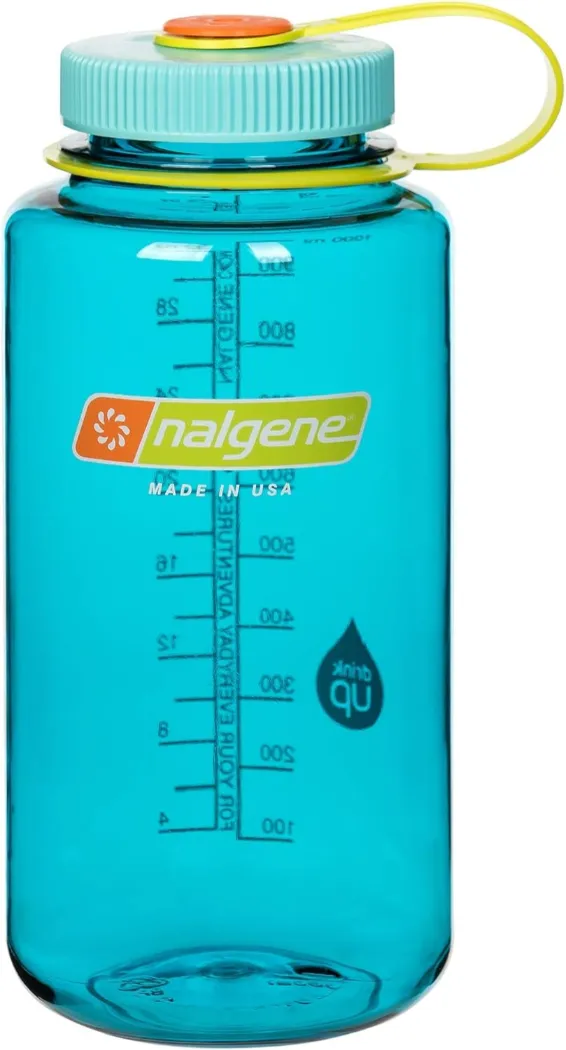
KEY FEATURES
PROS
CONS
This ranking wouldn’t be complete without the most popular bottle you can spot on any trail: the Nalgene Sustain.
While it might not be the most versatile bottle out there, it’s perfect for shorter hikes where you don’t need insulation or other fancy features. This simplicity is exactly what so many people find appealing about the Nalgene.
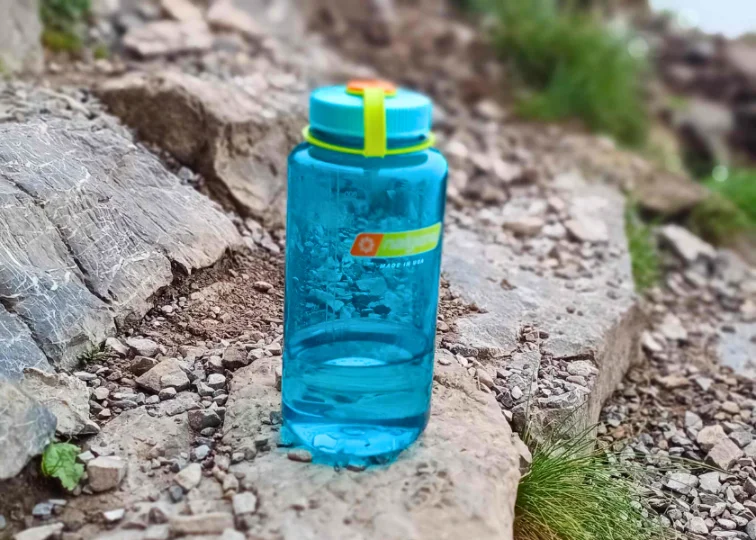
Key Features
First, let’s talk about what makes the Nalgene Sustain special. For starters, it’s made from 50% recycled content and each bottle contains the equivalent of eight single-use plastic bottles.

The design of the Nalgene Sustain is as simple as it gets. It consists of a cylindrical body and a screw cap, connected by a retaining strap. Despite its simplicity, leakage is not an issue and it doesn’t even need a gasket to keep your pack dry.
Cleaning the Nalgene is extremely easy. It’s dishwasher friendly, and its wide-mouth design makes it super easy to reach all places. I can’t tell you how many times I’ve struggled with narrow-mouthed bottles, trying to get them clean without resorting to weird yoga poses.
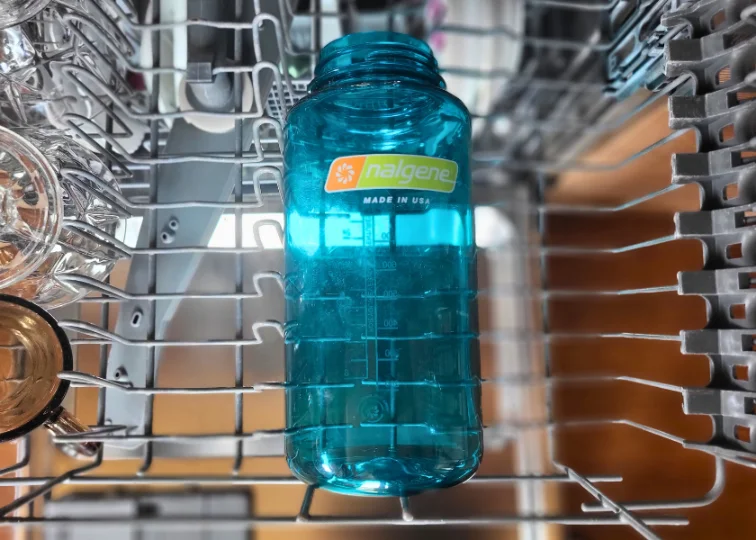
Call me old-fashioned, but there’s something reassuring about knowing where your gear comes from. The Nalgene Sustain is made right here in the US, and it even offers a lifetime guarantee that covers functional damage. That’s pretty exceptional compared to most other brands, which usually only cover manufacturer defects.
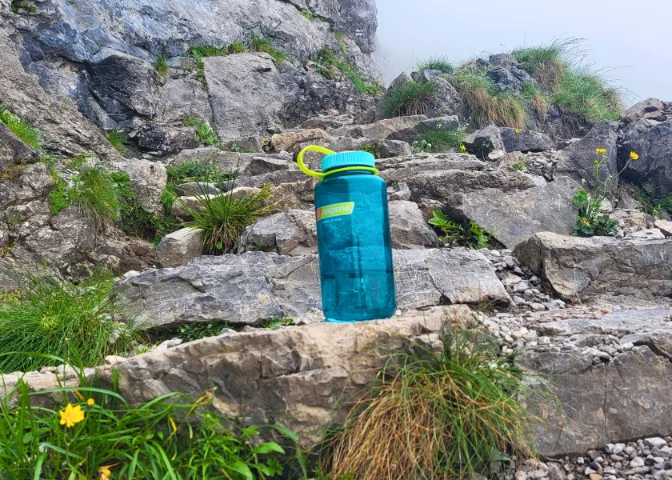
Potential Pitfalls
If you’re looking for a bottle that keeps your drinks icy cold or piping hot for hours on end, this isn’t it. But in fairness, the Nalgene Sustain was never about insulation. It’s more about reliable hydration on the go, so keep that in mind.
Now, if I had to nitpick, I’d say that the ergonomics leave something to be desired. Sure, the lid retainer is great for keeping track of the cap so it doesn’t roll off into oblivion, but it’s far from being a good carry strap.

Verdict
The Nalgene Sustain is a classic for a reason, blending practicality with an eco-friendly twist. Whether you’re new to outdoor activities or a seasoned pro, this bottle is a must-have.
From its tough-as-nails construction to its straightforward design, it’s an investment in staying hydrated and reducing your environmental footprint.
Nalgene Sustain |
|---|
 |
Best on Budget |
Platypus Platy
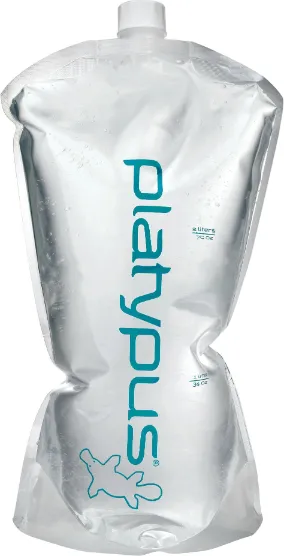
KEY FEATURES
PROS
CONS
The Platypus Platy is a fantastic option for anyone needing a reliable way to carry extra water without the bulk. What I like most about it is that it rolls down to such a small size that it practically disappears when not in use.
This flexible, collapsible water bottle can fit just about anywhere in your backpack, making it a versatile addition to your gear.
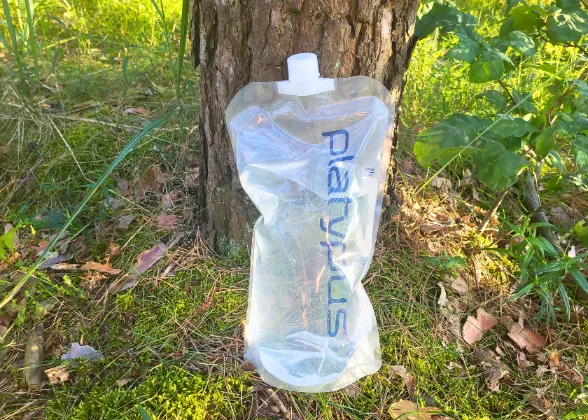
Key Features
The Platypus Platy is the lightest water bottle I’ve ever owned, weighing in at just 1.3 ounces, yet it still boasts a capacity of 70 ounces. Remarkably, this little wonder can serve one to two people easily on a long hike in hot weather.
Typically, I start my hikes with the Platy rolled up and tucked away. When the need arises – say, halfway through a grueling 10-mile trek – I drag it out and put it to work. Depending on my filter setup, I’ll either use it to store clean drinking water or keep unfiltered water for later purification.
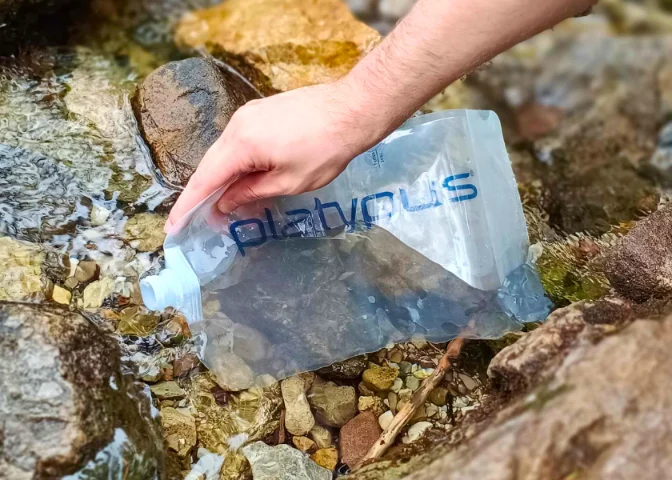
Now, let’s talk about the design. It’s collapsible, obviously, which means you can flatten it when empty and roll it up to fit practically anywhere, saving immeasurable space in your backpack compared to traditional stainless steel bottles.
Also, you wouldn’t guess from its looks, but it even stands on its own when full!
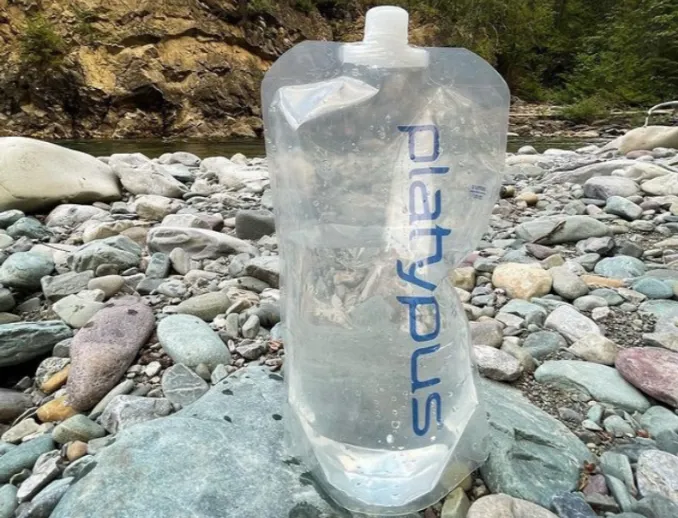
Potential Pitfalls
Drying it after cleaning takes forever. The small opening combined with the large volume means you’ll need a good two to three days to let it air out fully. And that’s in a dry climate. So, I usually save the cleaning for when I get home, avoiding the hassle on the trail.
Another thing to watch out for is the cap. It’s easy to misplace when refilling or attaching a water filter.
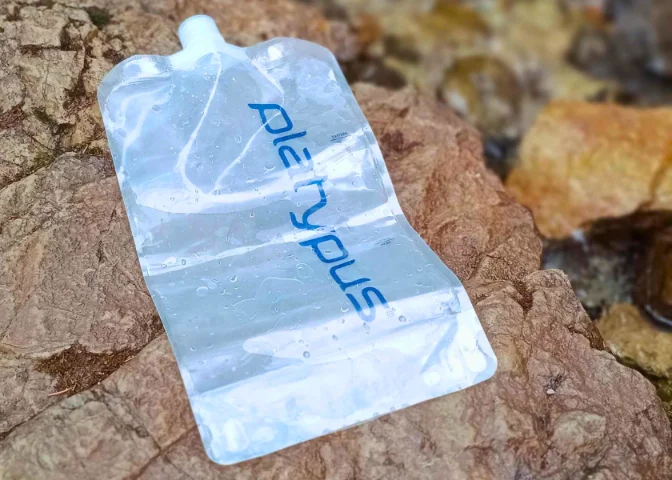
Verdict
For ultralight hikers, the Platypus Platy makes perfect sense. It weighs less than half as much as a Nalgene bottle and fits better into tight external pockets on packs.
Bonus points: when empty, I can fold it up and slip it into my pocket. And believe it or not, it can double as a makeshift pillow at night!
Platypus Platy |
|---|
 |
Best Capacity |
How to Choose a Water Bottle for Hiking? 4 Actionable Steps

Step #1: Consider the Material
In terms of water bottles for hiking, you have two main choices: plastic and stainless steel.
Stainless steel bottles are the best option. They keep your water cold (or hot) for hours and they feel durable and reassuring.
But they can be a bit of a nuisance. They’re heavier, which, after a few miles, feels like you’ve got a brick in your backpack (looking at you, YETI Rambler), and if you ever accidentally knock one over in the middle of a serene forest, the birds will scatter as if they’ve seen a ghost.
What About Plastic?
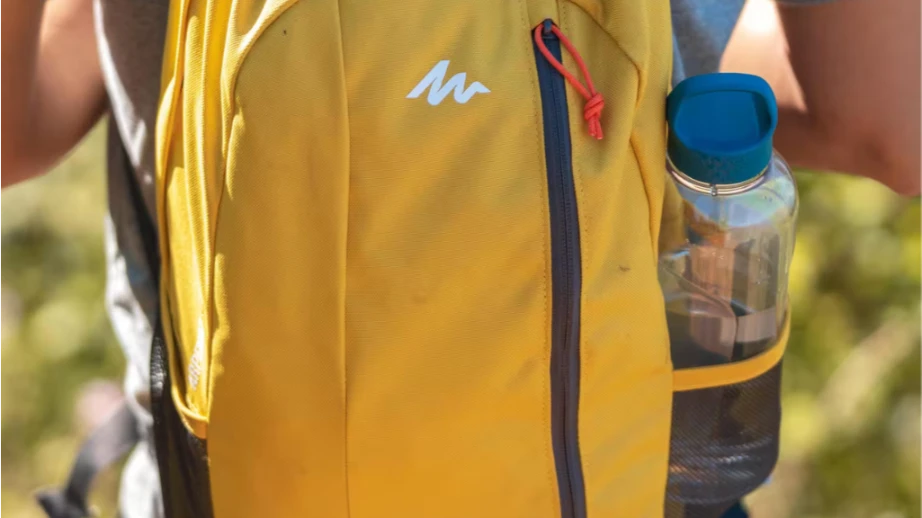
Sure, single-use plastics are a no-go, but reusable plastic water bottles can be a decent choice, especially for shorter hikes where you won’t miss the insulation.
Light as a feather and tough enough to handle the occasional drop (or five), these bottles are perfect for those who don’t want to carry around an extra pound of metal. Plus, if you lose it, you’re not crying a river over a $50 gourmet bottle.
Try to avoid the ones that make your water taste like you’re drinking from a garden hose. In my experience, Nalgene bottles are the best in this department.
Step #2: Check the Capacity
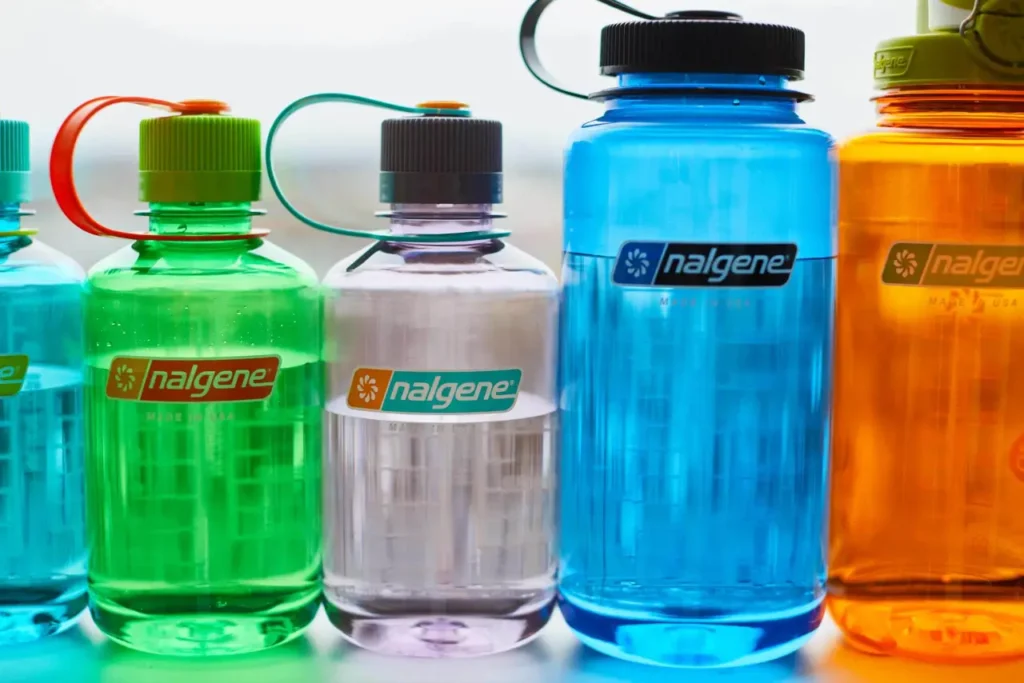
Think about how much water you’ll need during your hike. For short hikes that last no more than a few hours, a 24 oz. bottle might suffice.
For day-long hikes, you may want a water bottle that holds 32 oz. or more. If you’re hiking in an area with reliable water sources, consider bringing a smaller bottle along with a portable water filter like the LifeStraw Peak Squeeze.
Step #3: Look for Ease of Use
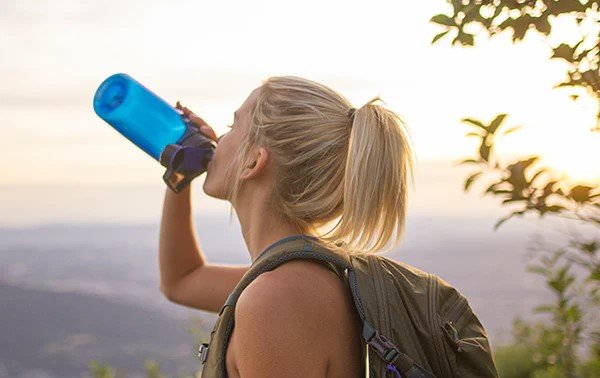
When you’re on the trail, you don’t want to wrestle with a bottle just to get a drink. Look for features like a wide mouth (for easy filling and cleaning), a secure lid (to prevent leaks), and maybe even a one-handed operation if you’re planning on sipping while walking.
Some bottles come with built-in straws or spouts, turning every sip into an effortless delight without the hassle of unscrewing the cap. Take my Hydro Flask, for instance – drinking directly from its wide mouth is great, but who wants to keep stopping mid-hike to avoid a soaked shirt? That’s why straw lids are a better choice for hiking.
Step #4: Think About Insulation
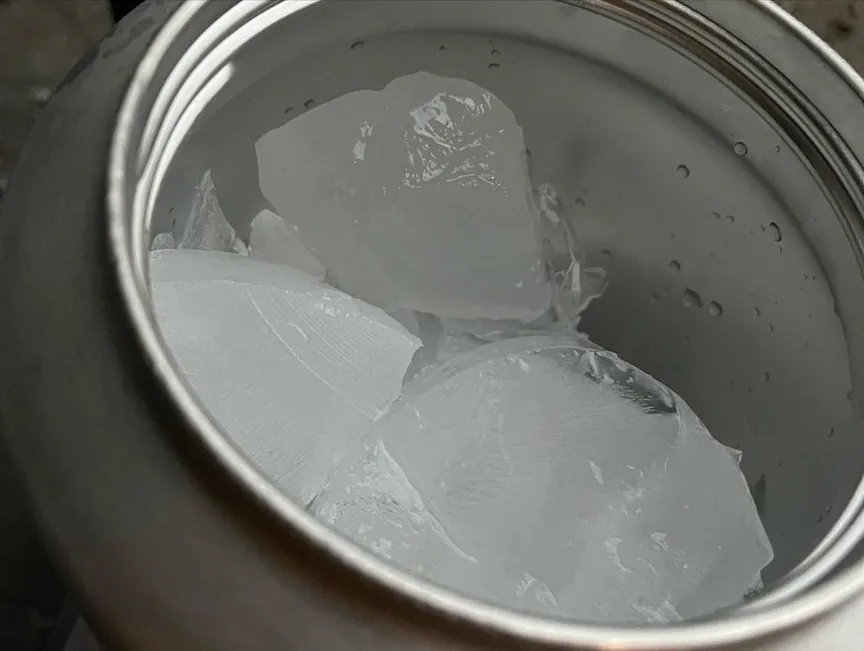
Double-walled vacuum insulation is a great feature to look for because it keeps liquids at the desired temperature for hours. Just remember, all that insulation can add weight, so balance your need for temperature control with the overall weight of your pack.
How Many Water Bottles Should You Bring Hiking?

If you’re heading out for a short hike, say an hour or two, one water bottle with the capacity of at least 32 ounces would suffice.
For hikes lasting more than a couple of hours with no refilling stations, I bring at least two water bottles with a capacity of 24-32 ounces each. Think of it this way: the first bottle is for staying hydrated, and the second is for when you realize you underestimated your thirst.
How Do You Carry a Water Bottle While Hiking?

The classic side pocket of your backpack is a solid choice. It’s convenient and easy to grab. However, if your bottle doesn’t fit snugly, you’ll spend half your hike stopping to pick it up every time it slips out.
When fitting my bottle in the backpack’s side pockets is not an option, I use a carabiner. Most bottles come with one, and it’s very useful. Just clip it on, and you’re good to go. No more worrying about losing your bottle to the forest floor.
For a different approach, consider a water bottle sling. You can wear it across your body to keep it from swinging wildly or around your neck. Just watch out for the strap rubbing against your neck – it’s not exactly how you want to add texture to your hike.

Conclusion
A water bottle is an indispensable element of hiking. Whether you plan to hike for six hours or just one hour, you NEED a bottle that’s tailored to the unique demands of the trail. Grabbing the first bottle off the shelf at the local store won’t cut it.
The options listed in this guide have features that many other bottles can only dream about. From insulation that keeps your drink cool to secure lids that prevent spills, these bottles are designed to serve you well, no matter which path you choose.
Frequently Asked Questions (FAQs)
Are Collapsible Water Bottles Good for Hiking?
Collapsible water bottles are good for hiking due to their unbeatable convenience. After you take that last sip, collapsing the bottle saves a ton of space in your backpack.
However, collapsible bottles can sometimes be a bit tricky to drink from, giving you the sensation of trying to drink from a deflated balloon. If you’re not careful, there’s also a chance the bottle might leak.
Yet, despite these annoyances, I find collapsible bottles to be pretty useful for hiking. They’re lightweight, more like ultralight, which means less strain on your back. And let’s face it, being able to pack it away neatly once it’s empty is a small joy that feels like a win in the great outdoors.
That said, if you’re someone who values sturdiness and ease over compactness, you might want to stick to traditional bottles. There’s something reassuring about a solid, no-nonsense bottle that won’t play tricks on you when you need it most.
Why Do Hikers Use Nalgene Bottles?
Hikers use Nalgene bottles because they’re virtually indestructible, reliable, practical, and a bit customizable. You know what you’re getting with a Nalgene, and sometimes, that reliability is worth its weight in gold, or at least in water.
Nalgene bottles are made from an extremely durable Tritan plastic. You could probably drive over one with your car and it would come out with just a few scratches. There’s something reassuring about knowing your water bottle can survive more than you can.
They also have wide mouths, which sounds minor, but when you’re trying to fill up at a quickly moving stream or add some ice cubes, it makes a difference.
Finally, Nalgene bottles add a bit of personality to your gear. You can slap on stickers from your favorite parks or brands, turning an otherwise plain bottle into a walking scrapbook of your adventures. I’m guilty of having mine look like a sticker bomb went off, but hey, it’s fun and tells a story!
Is Hydro Flask Too Heavy for Hiking?
While it’s made of stainless steel and heavily insulated, Hydro Flask isn’t too heavy for hiking. In fact, the 32 oz. version weighs 1 lb. 0.8 oz., which is still lighter than many other stainless steel bottles out there, some of which can tip the scales at nearly 10 ounces more.
That said, it’s not the lightest bottle on the market. If you’re the kind of hiker who counts every ounce, maybe you’d opt for something ultra-light. But if you appreciate a bottle that keeps your drinks at the perfect temperature, then hauling around a Hydro Flask is a small price to pay.
Plus, it’s built like a tank. You could drop it down a ravine (not that I’d recommend it) and it would probably come out with just a few scratches.

Jeremiah Kowalski
Hey there! I’m Jeremiah, the guy behind WaterBottleAdvisor.com. I used to have a bad habit of guzzling sodas while working remotely, but thanks to reusable water bottles, I’ve turned my hydration game around. After testing over 50 bottles, I’m here to help you find the perfect one to make staying hydrated a joy, not a chore. When I’m not reviewing bottles, you’ll likely find me scaling steep trails around the world, trusty water bottle in hand.
